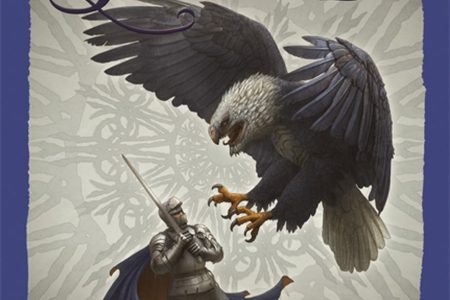Turbulence by Samit Basu, Titan Books. Published 7 July (£7.99).
Basu is not an author I was aware of before I read this novel, but he’s not a novice writer: he published the first book of his fantasy series, The Gameworld Trilogy, at 23 and has also worked on comic books – he wrote Devi for Virgin Comics and co-wrote the graphic novel Untouchable with Mike Carey. In Turbulence, he has combined these two elements to write the first in a trilogy about super-powered individuals in the real world.
This is a book that populates our world with the craziness of comic book abilities: there is a man who can surf the internet and control computers with his mind; there is a woman who can duplicate many copies of herself, including copies of whatever she’s holding; there are individuals with invulnerability, healing, invisibility, teleportation, the power to shape-shift, the power to grow very large, the power to animate the dead; there is an individual who can turn into a tiger-man, and another who can turn into an anime character with anime-style weapons.
Basu knows comic books: there are references to Superman, the Justice League, Wonder Woman, Iron Man, the X-Men (there’s even a reference to Multiple Man). The big fight scene set in London has echoes of Miracleman, and there’s a reference to Watchmen in the line, ‘Superman exists, and he’s not American’. And he is soaked in pop culture: there are references to Kill Bill, The Matrix, Bruce Lee and Tony Jaa. Notably, he doesn’t reference the one thing to which it is similar: the television series Heroes (in the sense of ordinary people discovering they have super powers and the formation of groups), but that was probably deliberate.
The set-up is straightforward: the passengers on a flight from London to Delhi arrive in London to discover that they have super powers that are related to their needs/desires. An air force pilot can now fly without the plane; a physicist can now invent futuristic machines; a woman who wants to be a Bollywood star finds that everyone likes her and wants to help her; a wife who has so many demands on her life can create copies of herself; a cricketer can now see slightly in the future so he can hit sixes every ball. However, some of the people on the flight have gone missing, and Aman, a young man who can now control electronic communications with his thoughts, and who has read enough comic books to know what has happened and that there will be good guys and bad guys, is gathering people to help them survive. In his group is Tia, the duplicator; Bob, who can control the weather in his vicinity; the Scientist, who makes the crazy inventions in his sleep. They share a house in Mumbai while they try to figure out what to do. They intercept Uzma, the would-be Bollywood star, and bring her back to the house to help her and explain the situation; shortly after, events start getting stranger when crowds suddenly turn into angry mobs trying to kill specific people (such as the cricketer at a cricket match); also, Vir, the flying fighter pilot, contacts the group and Aman warns him about his team leader Jai, who has plans to use the super-powered individuals to make India a superpower again.
Setting the novel in India is the distinguishing feature here, providing an interesting flavour to proceedings, and sort of makes sense when you consider the pantheon of Hindu gods. Basu, who was born and raised in India and partly educated in England, gives you the sense and feeling of his Mumbai settings, from the coffee shops to the cricket grounds to the busy streets, with an authenticity and colour that makes the places come alive. He also knows London, even if the locations he uses in the book are perhaps a bit more tourist-centric (St Paul’s, the Millennium Bridge, Oxford Street, Hamley’s), and this adds to the multicultural dimension of the book.
There is a question on the blurb on the back cover which asks about the book: ‘Will it end … in a meaningless, explosive slugfest?’, which suggests that the novel will have a different approach to the traditional comic book altercation. However, the set-up and mystery are more interesting than the resolution, which does end in the big fight between super-powered people; the rest of the book suggests that the author has avoided the usual trappings and was taking his story in a different direction. Basu has obviously read lots of superhero comic books and thought about a novel angle to examine some aspects of super-powered people in the ‘real’ world – you could even say that the Aman character, the pop-culture-soaked young man who is the person who tries to do something for the benefit of humanity with his powers without resorting to hitting people, is a stand-in for the author as he talks about the concepts of heroes and villains and the nature of paranormal ability. I don’t think he has quite achieved all his goals; the resolution doesn’t completely satisfy (and not just because it is left open-ended for the sequel) and his prose isn’t as scintillating as some of the really good authors in comic books – he uses pop culture references as a shorthand instead of using his own words to express himself. However, in Turbulence, Basu has created an interesting world with intriguing characters plucked from comic books and told an enjoyable tale.




